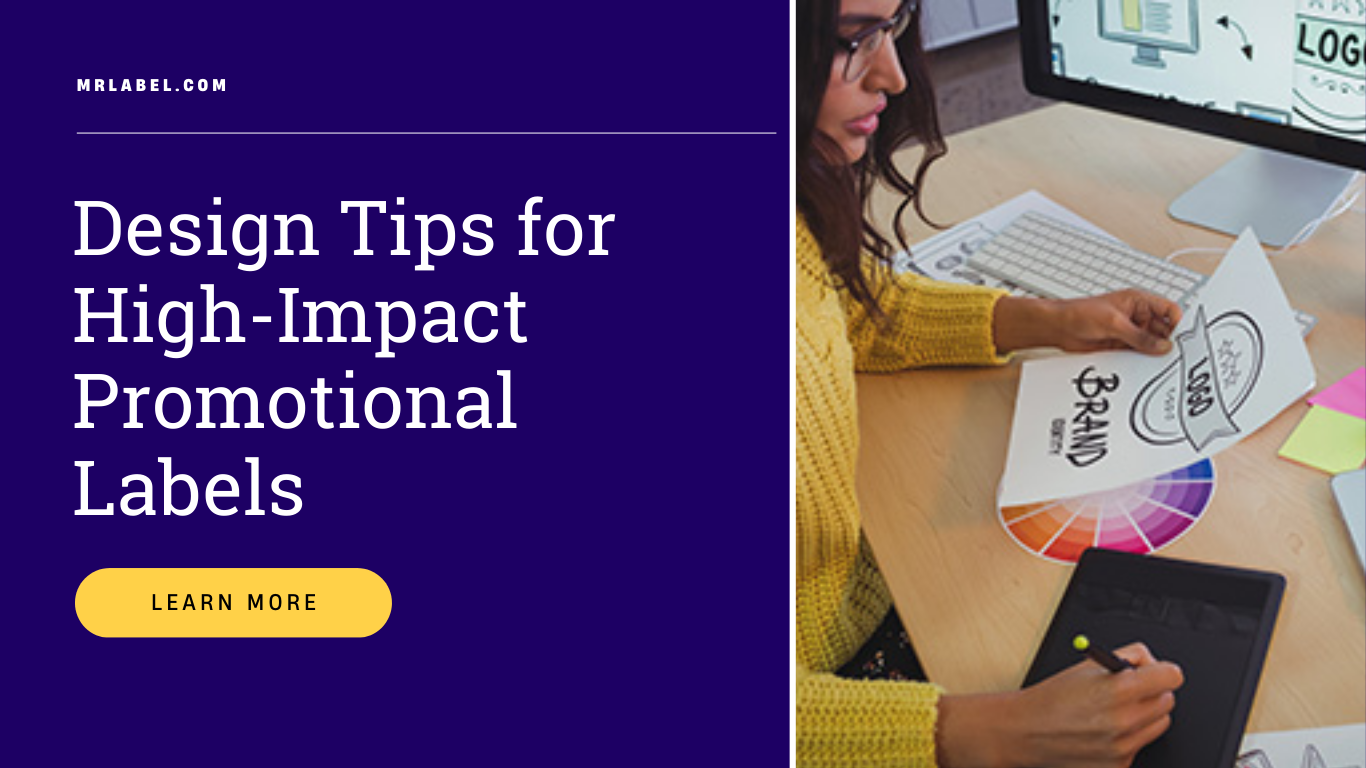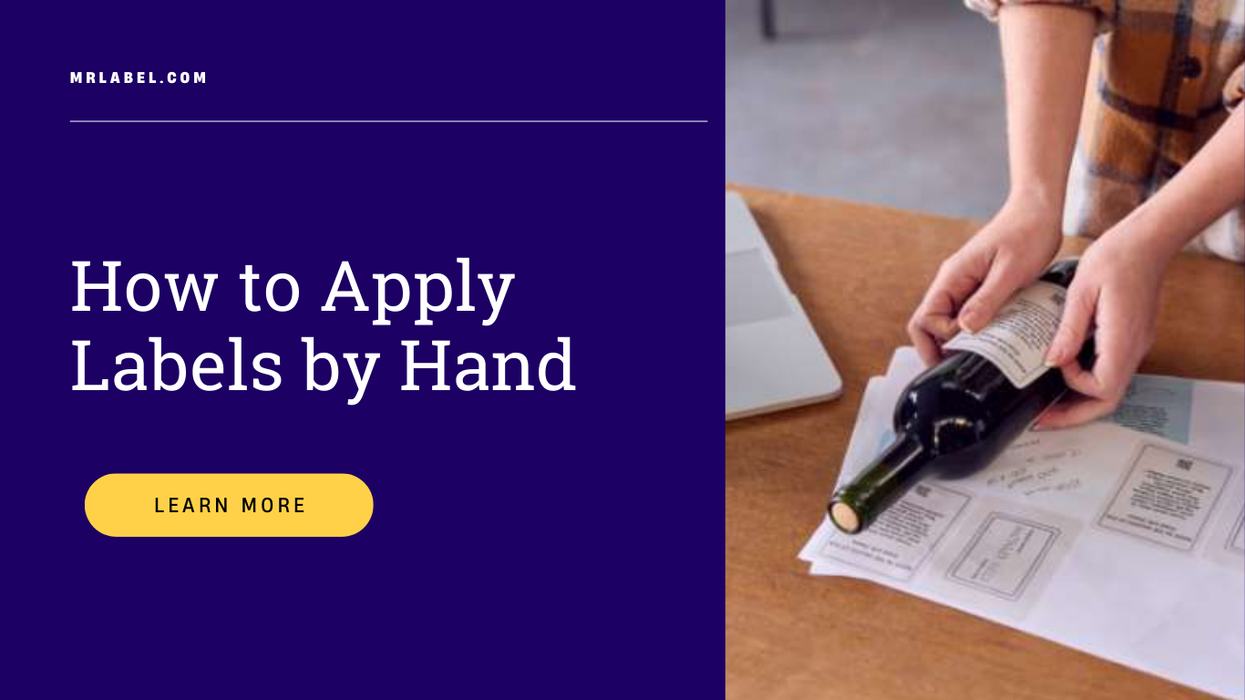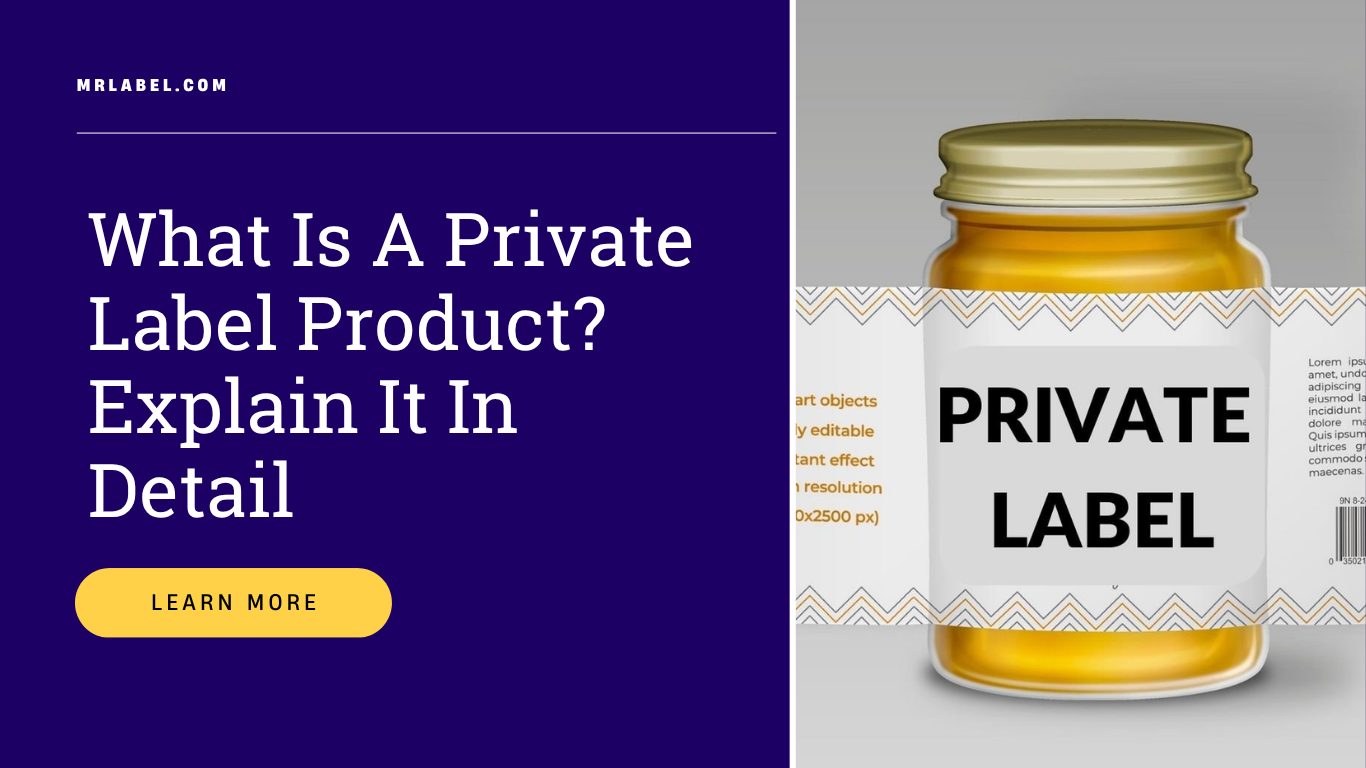Every brand and product has to beat a lot of competition to get ahead. If you visit a supermarket, you see so many similar products on the same shelf. What makes each one of them stand out?
What makes any brand look good? With a vast array of products competing for consumer attention, standing out on the shelves has become a challenge. A well-designed promotional label can be the key to capturing a buyer’s interest and influencing their purchasing decisions.
The right design has to be a balance of aesthetics, branding, and clarity, ensuring that your product makes a lasting impact. We will discuss how to design high-impact promotion labels.
Tips to Design High-Impact Labels

Here are some of the primary ways of enhancing the reach, and purpose of your product label. Follow these tips to rank better and see an increase in sales.
a. Define and Strengthen Your Brand Identity
Brand identity is the foundation of all the designing.
You can determine the tone through the right selection of colors and the message or tagline also becomes an integral part of the label. All the things that will appear on your product labels will add to the brand identity. A strong brand identity communicates your company’s values and unique selling points.
Always remember that the labels must show consistency even if you are changing the colors, or introducing a promotional label. The company’s identity should remain and that might mean that you use established brand colors, fonts, and logos to create a cohesive look across all products, or it could also mean that you can change the colors but the font, logo and tagline remain the same.
If your brand is eco-friendly, use sustainable label materials and earthy colors. If it’s luxury-focused, opt for elegant finishes like foil stamping or embossing.
b. Know Your Target Audience
What do customers want to see? What kind of knowledge, or product identity will customers relate to? You can understand your target audience’s preferences and use it to design the label. Knowing the audience is a crucial factor in designing effective promotional labels. Conduct market research through focus groups, surveys, and competitor analysis to identify what appeals to your customers.
For example, demographics play a vital role in knowing the audience. Labels for health-conscious consumers may use clean, minimalist designs, while fun, vibrant packaging may be ideal for children’s products.
Similarly, brand owners can highlight features that matter most to their audience, whether it’s organic ingredients, convenience, or luxury appeal.
c. Choose the Right Label Material
A label’s physical attributes influence consumer perception and usability. The right material ensures durability and enhances product appeal. Paper labels are always best for cost-effective and classic packaging, available in glossy, matte, or textured finishes. Similarly, film-based labels will be more durable, water-resistant, and ideal for products exposed to moisture or friction.
All companies are shifting to eco friendly practices and are considering biodegradable or recycled materials to align with sustainability trends. Moreover, the adhesive type also matters as permanent adhesives are for long-term durability. Removable adhesives are for temporary promotions.
If you have a product that requires long shipping hours or is exposed to the environment, you may need weather-resistant labels which are for extreme weather conditions.
d. Use Strategic Color Selection
Whenever you look at a label, the first thing you notice is the color scheme. Colors play a significant role in consumer psychology and that is why selecting the right palette can create emotional connections and reinforce brand identity. Some colors are more significant than others.
For example, red evokes urgency and excitement, great for sales and impulse purchases. The color blue conveys trust and reliability, ideal for health or tech products.
Another popular choice of color is green, which signifies natural, organic, and eco friendly offerings. A classic combination is black and gold, which creates a premium, high-end feel.
Brand owners and label designers can collaborate with their printer to choose between spot colors for bold, solid shades and process colors (CMYK) for complex gradients and imagery.
e. Highlight Your Unique Selling Proposition (USP)
Your label should clearly communicate what sets your product apart. If your brand has a fascinating beginning, or if you want to connect with passengers in a sensitive way, select a brand story. The tagline can be something like ‘Handcrafted by local artisans.’
If your brand has a unique feature, it should be mentioned on the label. For example, if the product is a natural one, the label can include: ‘100% Organic Ingredients.’
Similarly, if you are promoting a social cause, the label can read ‘Every purchase supports a social cause.’ Use a clear, concise message to attract attention and quickly convey product benefits.
This tip always works!
f. Emphasize Sustainability
Eco-conscious packaging is more than a trend—it’s a growing expectation. Sustainable labels can enhance brand reputation and customer loyalty. Use recyclable or biodegradable materials.
You can minimize ink usage and avoid excessive packaging. Moreover, use a clear display for eco certifications like USDA Organic, FSC certified paper, or recyclable symbols. Consumers are more likely to choose brands that align with their values, making sustainability a powerful selling point.
g. Ensure Clarity and Readability
While visual appeal is crucial, the label’s primary purpose is to inform consumers. Prioritize legibility and clarity by using simple fonts that are easy to read. Try and ensure contrast between text and background for better visibility.
Avoiding clutter by keeping the most essential details front and center. Include necessary information such as ingredients, usage instructions, and storage recommendations, ensuring compliance with legal requirements.
h. Maintain Brand Consistency Across Products
A consistent branding approach fosters recognition and trust. Even if you have multiple product lines, maintain a unified look by using the same logo placement, typography, and primary color scheme. Creating a template for product labels to ensure uniformity.
Ensuring all labels align with your brand’s voice and style. Brand consistency strengthens customer recall, making them more likely to recognize and choose your products repeatedly.
i.Why High-Impact Label Design Matters
A well-designed promotional label is more than just a decorative element—it’s a strategic marketing tool that makes a strong first impression and attracts consumer attention.
High-impact labels can differentiate your product in a crowded marketplace. Additionally, builds brand awareness and loyalty through consistent branding. These labels can drive purchasing decisions by clearly communicating value.
Moreover, it can ensure legal compliance and can even prevent misleading claims. A well-designed high-impact label can support sustainability efforts, meeting consumer expectations for eco-friendly packaging.
Final Thoughts
A high-impact promotional label blends aesthetics, clarity, and brand storytelling to create a compelling visual identity. By applying these design principles, businesses can increase their shelf presence, engage consumers, and enhance brand recognition.
Whether through strategic color choices, sustainable materials, or clear messaging, an effective label ensures your product stands out and stays memorable.



